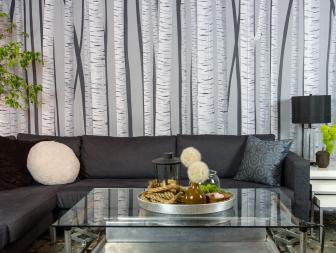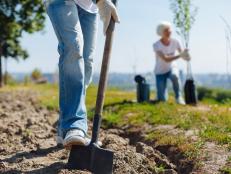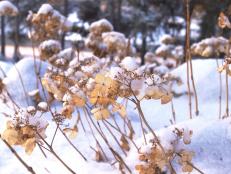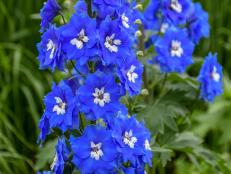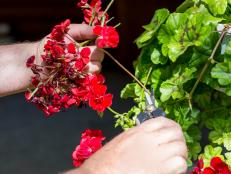Birch Trees: Planting and Caring for Birch Trees in Your Garden
With their pretty papery white bark, small- to medium-sized birch trees make unique additions to the landscape. Try growing a birch tree variety in your yard.
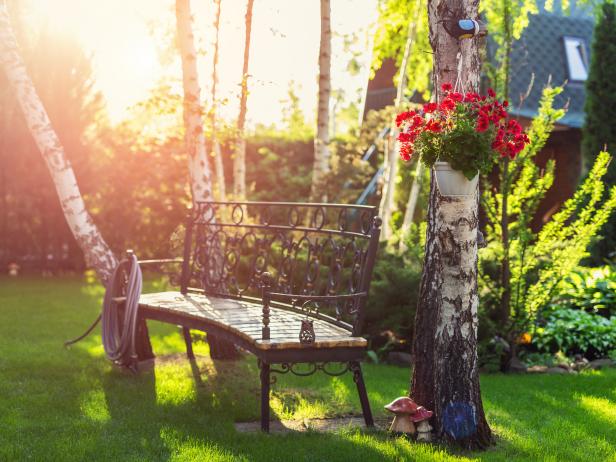
Shutterstock/Gorlov KV

Beloved for their paper white bark, birch trees are part of the Betula genus and come in an incredible array of varieties with 18 native to North America alone. Birches were among the first trees to become established after the glaciers receded.
Compared with other hardwoods, birches can be short-lived trees that rarely live beyond 100 years. But it is not uncommon for birch trees — especially the white-barked varieties — to die before reaching 20 years. What birch trees lack in longevity they deliver in idiosyncratic beauty.

Shutterstock/Heavy Rain
Birches are hardy, quick growing, and most require moist, sandy and loamy soil for solid growth.
Birch trees are the rare deciduous trees that make an impact in the winter landscape with their striking white bark creating visual appeal even when leaves are gone.
Popular Birch Varieties
River birch Betula nigra
A fast-growing tree with pink to reddish-brown bark that makes a statement in the landscape.
- USDA Zones: 4 to 9
- Height: 40' to 70'
Yellow birch Betula alleghaniensis
Native to the Great Lakes region and the northeastern United States.
- USDA Zones: 3 to 7
- Height: 60' to 75'
Cherry birch Betula lenta
A large tree with shiny red-brown bark.
- USDA Zones: 3 to 8
- Height: 40' to 70'
Silver birch Betula pendula or B. verrucosa
With their slender trunks, the silver birch tree looks lovely planted en masse in the landscape.
- USDA Zones: 2 to 7. Trees grown in USDA Zones 8 and 9 will have a shorter life.
- Height: 40' to 80'
Himalayan birch Betula utilis var. jacquemontii
This ornamental tree with bright white bark is native to Nepal and needs enough open space to accommodate its large 20-foot canopy.
- USDA Zones: 4 to 7
- Height: 30' to 50'
Japanese white birch Betula platyphylla 'Japanica'
Also known as Asian white birch, this tree is native to Korea and Japan and tends to perform better in cooler climates.
- USDA Zones: 3 to 8
- Height: 40' to 50'
Paper birch Betula papyrifera
Also known as white birch trees, these birches feature papery bark that peels off trunks.
- USDA Zones: 2 to 7
- Height: 50' to 70'
Designing With Birch Trees
Because they come in such a dramatic array of varieties with different trunks, bark and leaf shape and color, birch trees are a favorite of landscape and garden designers.
The striking white bark of the birch tree looks great when set against evergreens. They also work beautifully as specimen tree focal points in a garden.
Birch trees also provide dramatic punctuation on walkways and driveways.
Planting Tips
Pests
The bronze birch borer beetle or Agrilus anxius is the most common birch foe. To prevent infestation, place your birch tree in ideal growing conditions: a well-drained, moist spot with protection from harsh summer heat.
Watering
Keeping your birch tree well-watered and mulched is critical to your tree's success.
Mulching
Wood chips, shredded bark and leaf compost provide the best mulch.
Fertilizing
Generally fertilizer is not needed unless a soil test reveals your tree's soil is lacking in nutrients. If a test reveals the need for a fertilizer, a slow-release fertilizer is best.
Placement
Birch trees are fast growers but require cool, moist soil to thrive. The challenge is to site them in a location where they will receive full sunshine on their leaves but where the soil will remain cool and moist. Most prefer being situated on the east and north side of your property where your home can provide the necessary afternoon shade.
Keep birch trees planted away from water lines. These thirsty trees have shallow roots that may grow toward your waterline.
Pruning
Insects tend to target birch trees where they are cut or damaged so keep trees free of damage and avoid excessive pruning. Pruning should not be done between May 1 and Aug. 1, the flight period of the birch tree's greatest pest enemy, the bronze birch borer. The beetles are attracted to fresh pruning wounds.
Birch Tree Varieties: A Closer Look
Interested in planting a birch tree in your yard? These two varieties, the river birch and paper birch make great additions. Read more about these popular birch trees.
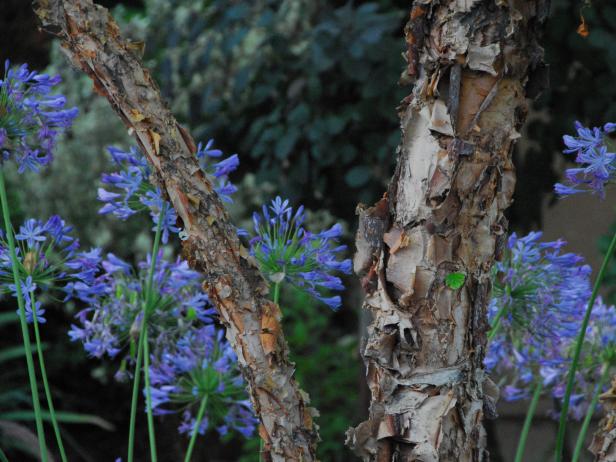
Courtesy of Monrovia
River birch (Betula nigra)
River Birch is a well known and widely used landscape plant. Most of us are not familiar with this American native in its natural environment. When you bring a tree into your landscape, understanding where it came from can help you understand how to care for it.
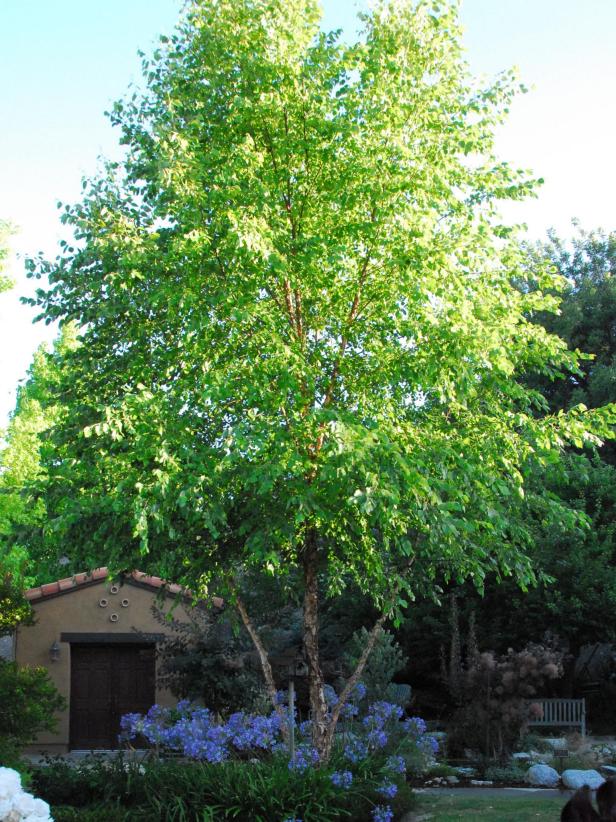
Courtesy of Monrovia
General Description
River birch is a medium sized tree, reaching 40' to 70' tall, not quite as wide. The trunk tends to form multiple large arching branches near the ground, and it generally is grown in landscapes with multiple stems. The bark exfoliates in sheets of tan, brown, copper or reddish-brown colored papery sheets in early years. As the tree matures, the bark at ground level becomes brown and furrowed. The leaves are a lustrous medium green, turning shades of yellow in fall. River birch is grown for its beautiful bark, handsome structure and light, airy shade.
Short History
River birch (a.k.a red birch) is native to nearly all of the southeastern quarter of the U.S., from Massachusetts to Texas and all of the major river valleys in between, following the major river valleys into the Midwest as far north as central Minnesota and Wisconsin. In the South it is absent, or nearly so, in the higher elevations of the Appalachian mountains and along the coastal plain. These are the southernmost birches, which prefer the silt-laden bottomlands of the slow moving Mississippi and its tributaries, instead of the rushing streams and cold clear lakes where its birch relatives are found. In its home range, it grows sparsely among silver maple, black gum and sycamore.
Although river birch has never been known commercially as a great source of lumber, it has been historically used for specialty projects as diverse as furniture, ox yokes, wooden shoes and hoops for rice casks. Today it is used minimally in the paper industry, for artificial limbs and for children's toys. River birch is most helpful to us as a living tree; It beautifies our landscapes and has even been used quite successfully on strip mine reclamation sites.
Planting
River birch is well suited to areas that may be wet in spring and dry late in the season (consider its natural habitat that gets flooded in spring and often quite dry by fall). It requires full sun. It is not exactly drought tolerant, dropping interior leaves in reaction to this stressor, but it does rebound seemingly unaffected. It prefers a mildly to highly acidic soil (pH 6.5 or lower), and the leaves will become off-colored in a higher pH setting. Both container-grown and balled-in-burlap trees transplant readily. Though often used to some degree of success in parking lot islands, river birch performs better in less-constrained sites where the roots can explore further.
Maintenance
Keep river birch well mulched to conserve soil moisture and minimize late summer leaf drop. Pruning is seldom required, but do so in the summer if necessary. Pruning in winter will cause the tree to "bleed" sap heavily. River birch trees have no major pest problems.
A Few Landscape Cultivars
'Dura-Heat'
'Little King'
'Heritage'
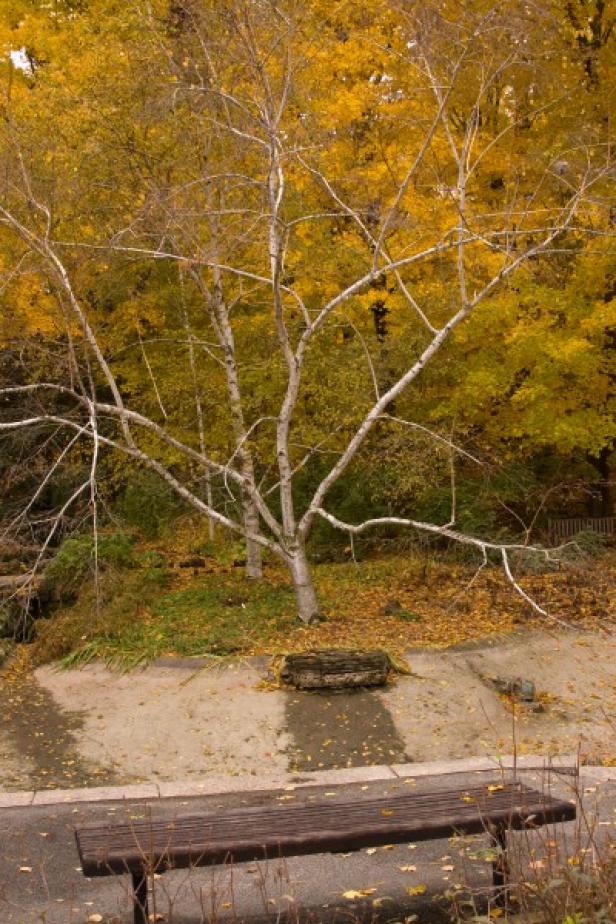
Photo Courtesy of Bailey Nurseries
Paper birch (Betula papyrifera)
Paper birch is a classic symbol of the northwoods and a beautiful specimen for landscapes. This American native tree is a reminder of our wilderness heritage, yet enhances the most refined landscapes with its graceful form and sublime colors.
General Description
A truly cold-loving tree, paper birch thrives in USDA Zones 2 to 6. It is a medium to tall tree, reaching 50' to 70' tall, rarely one 100 feet, at a moderate growth rate. The irregularly pyramidal form of its youth gradually gives way to an oval crown at maturity as it retains many lower branches into old age. Its bark is smooth and coppery brown as a sapling, turning the famous creamy-white with exfoliation that reveals the orange inner bark at about 3 to 4 years of age. Old trees gradually become marked with black, then somewhat furrowed. Dark green leaves of summer turn bright yellow in fall. Due to its resistance to the birch borer, paper birch is preferable to European white birch where the pest is present.
Short History
This species has the broadest east-west distribution of all the birches: from Greenland to New England, New York and Pennsylvania, west to Alaska, Washington, Montana and Nebraska. One of the most northerly growing of all trees, its range extends from the edge of the arctic tundra south into the range of the pantheon of eastern North American hardwoods.
Paper birch fills a role in forest ecology as a nurse tree. Being one of the first to sprout on bare ground, it provides protection for ensuing species to grow. As paper birch is relatively short-lived, it gradually gives way to maple, hemlock and spruce. Paper birch (a.k.a. white birch, canoe birch) is named for its stark white, exfoliating bark.
Outdoors types readily welcome its bark for its notorious ability to start a campfire in all types of weather (Avoid damaging living trees...only use bark from those that are dead and down). Birch bark was used by Native Americans for construction of canoes, dwellings and all types of containers for which a waterproof material was required.
The oil that makes birch bark both waterproof and flammable is distilled for various uses. Birch tar was used as a glue and weatherproofing material. Birch essential oil is still used medicinally. Like sugar maple, paper birch can be tapped in the spring for its sap which is reduced into syrup.
In the timber industry, paper birch is useful as well. It is commonly used for pulpwood in paper making. It is useful for small items like toothpicks and popsicle sticks. It is also used to make plywood.
Planting
A choice site for planting paper birch includes cool, moist, deep, acidic soil and full sun. It is a thrifty plant, not requiring a wealth of nutrients. It does not tolerate high levels of pollutants, and so streetscapes, parking lots and other tough areas should be avoided. Container-grown and balled-in-burlap stock transplant equally well. A beautiful combination for winter viewing places paper birch in the middle with an evergreen screen behind and red-twig dogwood to the fore.
Maintenance
The paper birch's tendency to hold on to lower branches may require some pruning as the tree comes into maturity. Pay particular attention to soil conditions and amend as needed to provide drainage at planting time. Keep the tree well mulched to maintain consistent soil moisture.
Landscape Cultivars
'Chickadee'
'Snowy'
Love Birch Trees? Bring the Look Indoors
Make a Birch Forest Mural 16 Photos
Bring the outdoors in with this birch forest living room mural. A few cans of paint and plenty of masking tape is about all you need for this dramatic effect.






